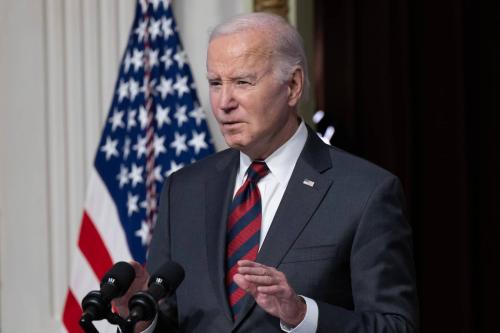I once called an older version of Paul Ryan’s budget plan “voodoo economics.” But you have to admire him. He has just released a new plan that slashes the deficit from 8 percent of GDP to around 1 percent by the end of the decade while simultaneously keeping revenues at 18 percent of GDP over the decade, very close to their historical average. To be sure, the specific policies required to get there are not well specified and there is much that I don’t like, such as the assumption that we don’t need new revenues to close the fiscal gap; still, after reading the “Path to Prosperity” I came away with a sense that there is food for thought, worthy of further discussion and debate, in this document.
I came to this conclusion after reading the section of the document called “repairing the safety net.” I had figured out that a lot of the savings in this plan had to come from slashing programs for the poor so I expected to be horrified by what I read. I am not in favor of cutting programs for the poor, especially in a plan that reduces taxes for the wealthy and leaves Social Security virtually untouched. Instead, I found myself at least intrigued with the arguments that I found in this section of the plan. They are thoughtful, well-articulated, and worthy of further debate.
One argument is that federal subsidies for safety net programs encourage states to spend more than they otherwise would. Another argument is that federal dollars come with federal prescriptions and paperwork that stifle state innovation and efficiency. A third argument is that these programs undermine efforts by civic or faith-based groups to play a stronger role. A fourth argument is that some of these subsidies (for example, Pell grants) simply bid up prices (for college tuition). A fifth argument is that we have too many overlapping and complex programs with similar purposes (job training being a great example). A sixth argument is that assistance should be made conditional on personal responsibility—for example, being engaged in work or job training if you are receiving government assistance. This model of conditional assistance was a key element in the largely successful 1996 welfare reform law and could be expanded to other programs. Finally, the plan emphasizes the importance of upward mobility—a goal which I think many can embrace.
There are plenty of counter-arguments that could be advanced against this set of principles and the block granting or conditionality that they imply. For example, block grants, by leaving responsibility to the states, invite a race to the bottom since no state wants to be a magnet for poor people; in addition, they leave low-income families in less prosperous states at the mercy of their states’ limited fiscal capacity; and they would widen geographic disparities in access to various kinds of assistance. Moreover, there is no reason to assume these proposals will actually save significant sums of money. So, in the end, we are indeed penalizing the least fortunate. But if they were combined with level—or increased—funding, they might actually lead to more effective efforts to improve upward mobility. It is for this reason, that I believe they deserve a hearing. But they should be combined with a pledge to “do no harm” to those who are playing by the rules and remain at the bottom of the ladder.
Most of the rest of the savings in the plan come from assuming that the Affordable Care Act subsidies will be eliminated and that health care spending growth can be sharply reduced (in both Medicare and Medicaid). This will require either a rationing of care or much higher financial burdens on individuals. Again, I am not in favor of shifting costs to individuals with modest incomes (although the affluent among us could afford to pay more). However, caps on spending growth have the potential to force a discussion about how to ration care. And the best way to do this would be to establish practice standards based on evidence of effectiveness and limit government subsidies to those procedures.
Do I think this is a serious deficit reduction plan? No. Do I think it contains some serious ideas? Yes.



Commentary
In Defense of Paul Ryan’s Budget Plan
March 20, 2012